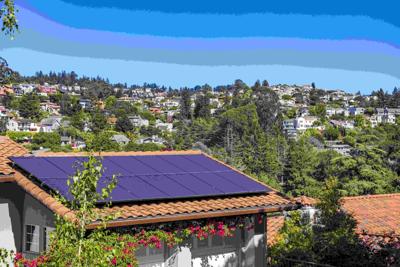At its core, a solar home is a residence equipped with solar panels that harness the energy of the sun to generate electricity. These homes are not just a response to the environmental challenges posed by traditional energy sources; they represent a fundamental shift in how people think about power consumption and sustainable living.
The Benefits of Solar Homes
The primary advantage lies in their ability to tap into a clean and renewable energy source—the sun. Unlike fossil fuels, solar power generates electricity without emitting harmful pollutants, reducing the carbon footprint of households and contributing to a cleaner environment.
In California, where a commitment to environmental sustainability is particularly pronounced, solar companies play a pivotal role in making these homes a reality. These solar companies California, often at the forefront of technological innovation, provide the expertise and infrastructure needed for homeowners to seamlessly transition to solar power, further amplifying the environmental benefits and fostering a greener, more sustainable future for the Golden State.
While the initial investment in solar panels may seem substantial, the long-term savings on energy bills are significant. They often produce more power than they consume during sunny periods, allowing homeowners to sell excess energy back to the grid or store it for later use, ultimately leading to reduced or even eliminated electricity bills.
These homes provide a degree of energy independence. By generating their own power, homeowners are less reliant on external energy sources, reducing vulnerability to power outages and the volatility of energy prices.
Advancements in Solar Technology
The rapid evolution of solar technology has been a driving force behind the surge in solar home adoption. Innovations in photovoltaic cells, energy storage systems and smart home technologies have collectively propelled these homes into the mainstream.
Modern solar panels boast higher efficiency rates, capturing more sunlight and converting it into electricity. This means that even in areas with less sunlight, homes can still generate a substantial amount of power.
Advancements in energy storage technology, such as high-capacity batteries, allow solar homes to store excess power generated during peak sunlight hours for use during periods of low sunlight or at night. This capability ensures a continuous and reliable supply.
Solar homes often feature smart technologies that optimize energy usage. Smart thermostats, lighting systems and appliances can be synchronized to maximize energy efficiency, ensuring that every watt of solar power is utilized wisely.
Innovations like solar shingles and BIPV seamlessly integrate the technology into the home's architecture. These aesthetically pleasing solutions eliminate the need for traditional panels, blending sustainability with design.




(0) comments
We welcome your comments
Log In
Post a comment as Guest
Keep it Clean. Please avoid obscene, vulgar, lewd, racist or sexually-oriented language.
PLEASE TURN OFF YOUR CAPS LOCK.
Don't Threaten. Threats of harming another person will not be tolerated.
Be Truthful. Don't knowingly lie about anyone or anything.
Be Nice. No racism, sexism or any sort of -ism that is degrading to another person.
Be Proactive. Use the 'Report' link on each comment to let us know of abusive posts.
Share with Us. We'd love to hear eyewitness accounts, the history behind an article.